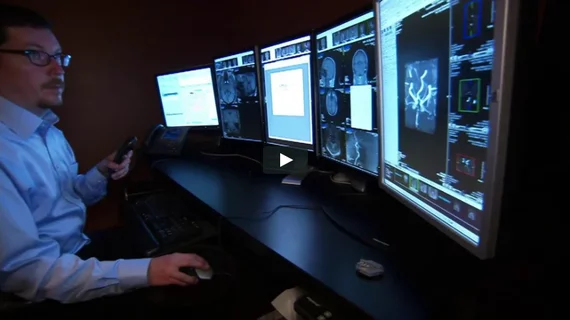Having attending radiologists cover overnight reporting reduces ED imaging callbacks by 90%
Introducing an attending radiologist to cover overnight reporting decreased imaging exam recalls in one emergency department by nearly 90%, according to a new study. It’s anticipated that this practice will also reduce costs and enhance the patient experience.
That’s what medical imaging researchers from the University of Toronto in Ontario found upon comparing exams performed before and after implementing off-hours, radiologist-led coverage. In the two years before the intervention, imaging-related ED recalls topped 61 annually. The year after, however, that figure dropped to seven, a decrease of 89%.
While the number of patients called back to the ED for imaging within 48 hours of their initial visit was already low, this intervention made a significant impact and offers a number of downstream benefits, Rawan Abu Mughli, MD, with Sunnybrook Health Sciences Center’s Division of Emergency & Trauma Radiology, and colleagues explained.
“In addition to patient comfort and safety benefit, this likely resulted in decreased costs and enhanced patient flow through our very busy emergency department,” Mughli et al. added Jan. 11 in Emergency Radiology. “Observations seem to indicate these benefits may well further increase with time after introduction of the new model.”
Mughli and colleagues piloted in-house radiologist coverage at Sunnybrook—the busiest level 1 trauma center in Canada—in September 2017. Under this new model, attending radiologists provide final reports for all overnight ED acute imaging studies and inpatients. Rad residents submit preliminary reports within two hours of the exam and remain referring physicians’ point of contact for discussing findings and submitting study requests. Prior to this new format, residents took overnight duties and attending rads signed off on final reports the next day.
Overall, overnight imaging utilization increased throughout the study, climbing from 13,000-plus in 2016 to more than 14,000 in 2017, before ultimately exceeding 15,000 after 2018. During that same period, imaging-related recalls dropped from 54 to 7, a true decrease of 89% and an expected decline of 90%, the authors noted.
In addition to these gains, Mughli et al. found that ED physicians were happier with final reports, particularly those involving surgery. Emergency workflow also improved and the overall quality of care is likely to follow suit, which is crucial to optimizing patient management, the authors explained.
Some researchers question the benefit of utilizing overnight attending rads, pointing to the existing low discrepancy rates between residents and attendings. Mughli and colleagues, however, maintained that it’s important to push recall numbers as low as possible.
“Overnight final reporting significantly decreases ED recalls for patients receiving diagnostic imaging overnight,” they added. “While numbers are low even prior to rollout, the number should be minimized wherever possible to diminish patient anxiety and discomfort, reduce ED overcrowding and expedite definitive management.”
Read the entire study published in Emergency Radiology here.

